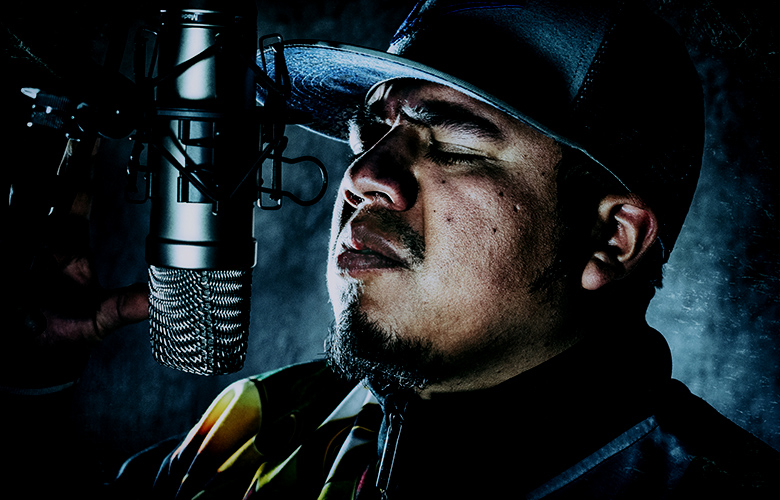
When I was a young person first becoming interested in sound, I was frequently entranced by the sheer loudness of events. After all, I started playing drums at age 8, and I loved to hit those drums as hard as I possibly could. I wanted them to thunder, and I sought out the same in entertainment—seeking out earth-shatteringly loud concerts and shows to attend, running my car and home stereos way too hot. If I couldn’t feel the bass in my chest, and if my ears weren’t ringing by the end of a song, I felt cheated.
It wasn’t till several years after that, sadly, that I listened to that very good advice. As a result, I have a 4kHz notch reduction in my hearing in my left ear (hi there, hi-hat!), and my overall threshold for silence (the quietest sounds I can hear) is about 10dB higher than an average listener. Thankfully, I eventually wised up, started wearing good ear protection, listening at lower levels and generally caring about my ear health, but the damage was done.
I’ve had audiology tests, and while my hearing above the threshold (and with the exception of the aforementioned notch) is quite accurate, I know both the shape and extent of the damage. There’s no way to undo that, so now I work diligently to prevent further loss.
For anyone who either works with their ears or hopes to work with their ears, hearing protection is an absolutely essential part of maintaining your longevity in the industry. The list of people to whom this advice applies is long:
I know I should wear earplugs at a Metallica concert, but is that all it takes to preserve hearing into old age? Not exactly. Hearing protection can involve earplugs, over-ear protection (like the kind you see at a shooting range), and most importantly, identifying when hearing is likely to be damaged, and bringing protection when needed.
First, let’s talk about earplugs—the most common ear protection. There are a host of different models and types available, from the standard foam inserts found in drugstore checkout lines to custom molded models that can run over $1000 for a pair. What do you need, and when?
The earplugs that might be advisable for a Front-of-House engineer who needs protection while mixing a show that will reach dangerous SPL (Sound Pressure Level) are probably going to be more expensive than those the average listener will need for pure protection on a day-to-day basis, but there are some key factors to consider.
Attenuation: the first consideration when choosing earplugs is sheer noise reduction level (aka attenuation). OSHA recommendations state that safe listening levels for an 8-hour workday are a maximum of 90dB SPL (though some other organizations connected with audiologists argue that 80 or 85 is a safer target for a full day of work). If you’re going to be exposed to levels higher than these limits for any period of time, you probably should think about protection, and most earplugs will state how many dB of reduction they will perform.
Of course, the reduction factor is not the same across all frequencies, and more expensive earplugs will often provide a chart showing the reduction factor across the frequency spectrum. How much reduction do you need? In the US, large concerts can often hit 110-115dB SPL at peak, and are often running at or over 100dB SPL consistently through the event. The New York subway can hit nearly 102dB SPL on certain platforms. For perspective, that’s about as loud as a jet engine taking off from 1000 ft. You need protection robust enough to get you below those safety thresholds mentioned above. If you don’t know how loud your environment is, there are many free and inexpensive SPL meter apps for smartphones that, while not 100% accurate, will at least give you a good ballpark figure to deal with.
Frequency range: one of the frequent complaints about inexpensive earplugs is that they tilt the frequency response too much away from our natural balance, producing a muffled, dull sound, lacking in high frequency detail. This can make them a difficult sell to mix engineers and other audio professionals who need ear protection while working, but who need to hear accurate frequency balance.
On the flipside, the cost of earplugs that produce a flatter frequency response while still providing robust attenuation often leads mix engineers to conclude that wearing NO earplugs is the best solution, hearing damage be damned. Fortunately, there has been a lot of movement in the market in recent years, and there are a ton of brands working to deliver flat (or at least, flatter than the standard foam model) earplugs at affordable prices. While you will likely be paying more than $1 for your pair of plugs, paying $40 a pair is better than paying $1000 for most of us, and the difference in frequency response from the cheapest models is enormous.
Fit: for a long time, this has been the sticking point on the mid-level plugs—maybe they provide decent frequency response and attenuation, but if they are only offered in one size and shape, they just might feel bad in your ear canal, or fall out all the time, or not fit all the way in, and one way or another weren’t suitable for any lengthy use. There are now companies making models that solve this problem by providing an earplug that has two pieces: a main noise absorber, and an in-ear tip. Such companies often ship plugs with multiple tips in different sizes, making it easier than ever to find plugs that will work for your particular ears. It is not the business of this publication to advocate any particular brand(s), but a quick web search will turn up some excellent options.
When do you need expensive custom-molded earplugs? That’s a choice only you can make, but most often, buyers are led down this road when they find themselves professionally wearing plugs every day, they need particularly refined frequency response, and they haven’t found standard models whose fit works well for them.
At loud concerts, and behind a drumset, sure, but when else? There are a lot of everyday occasions that would benefit from hearing protection: from working in scene shops to traveling on light rail and subway cars, from attending major sporting events to hammering nails to hang pictures in your apartment.
No one is perfect, and no one will use ear protection in every single instance where they would benefit from it. But if you depend on your ears for your living, the more protection you use on more occasions, the longer you will be able to do your work into old age (and still derive pleasure from listening to music and shows!). Even if all you can afford is the cheap foam plugs in the checkout line, protecting your ears at all is better than living with tinnitus and (even worse) serious hearing loss down the road.
The Duty of Artists to Speak: Trump and Illegal Immigrants
Performing Arts and Overworked Staff: Let’s Not Pretend We’re Okay


Josh Loar is a sound, lighting, video, and control system designer who has designed projects all over the world, from theaters, to concerts and festivals, to corporate events and conventions, to theme parks. Josh has worked as a professional designer for more than 20 years. He has designed and engineered systems for clients including Walt Disney Imagineering, Lotte Group, Busch Gardens, and more. He is the author of "The Sound System Design Primer", available from Focal Press/Routledge. He is co-chair and co-author of the upcoming ESET (Essential Skills for Entertainment Technicians) test in audio. He is chair of the USITT (United States Institute for Theatre Technology) Sound Graphics Working Group, working on issuing new and more comprehensive documentation standards for theatrical sound paperwork. Josh is an accomplished FOH (Front-of-House) and recording engineer, having worked with artists including Paul Simon, David Byrne, Mos Def, Rickie Lee Jones, Charlie Haden, Philip Glass, and many, many more. He is an educator who has been teaching at the university level for nearly a decade, at Yale School of Drama and now at Michigan Technological University. He is also a multimedia artist, musician, producer, director, and creator of lots of different kinds of weird art.
Read Full Profile© 2021 TheatreArtLife. All rights reserved.

Thank you so much for reading, but you have now reached your free article limit for this month.
Our contributors are currently writing more articles for you to enjoy.
To keep reading, all you have to do is become a subscriber and then you can read unlimited articles anytime.
Your investment will help us continue to ignite connections across the globe in live entertainment and build this community for industry professionals.